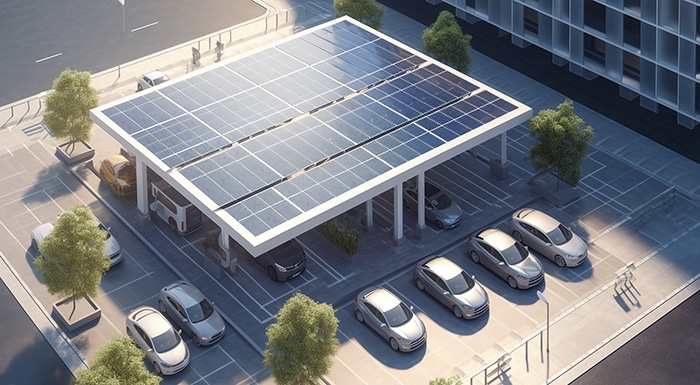In the field of electrical and electronic engineering, the voltage converter serves as a crucial static electrical device, playing an important role in transforming different voltage levels.
It not only adapts to the voltage requirements of various devices but also optimizes efficiency and stability in power transmission and distribution. This blog will provide an in-depth analysis and discussion of the basic principles, structural components, working mechanisms, and practical applications, as well as the technical challenges and solutions of voltage converters.
Basic Principle of a Voltage Converter
A voltage converter, as its name suggests, is a device that converts one voltage value to another. In AC (alternating current) systems, this conversion typically maintains the frequency constant while only adjusting the voltage amplitude. Its core principle is based on electromagnetic induction and mutual inductance, particularly utilizing transformers to achieve voltage step-up or step-down transformations.
Two fundamental formulas for an ideal transformer:
- Voltage ratio formula: U1/U2=N1/N2 Where U1 and U2 are the primary and secondary coil voltages, respectively, and N1 and N2 are the primary and secondary coil turns. This formula indicates that within the same transformer, voltage is proportional to the number of coil turns, forming the basis of voltage conversion.
- P in = P out Meaning the input power of the transformer equals the total output power of all secondary coils. This principle ensures the conservation of energy during the conversion process, which is key to the efficient operation of transformers.
Components and Functions of a Voltage Converter
A voltage converter typically consists of several key components, including coils (or windings), a core (or frame), insulating materials, and possibly a cooling system. The coils are the core components that achieve voltage conversion, transferring energy between the primary and secondary coils through electromagnetic induction.
Voltage-to-Current Converter (V/I Converter): As a specialized form of voltage converter, a V/I converter focuses on converting voltage signals into current signals. This conversion is particularly important in scenarios where stable long-distance signal transmission is needed because current signals, compared to voltage signals, are less affected by resistance during transmission, reducing signal attenuation. V/I converters usually consist of self-excited oscillation modulation amplifiers, power detection amplifiers, and feedback circuits, maintaining output current stability through negative feedback mechanisms.
Detailed Working Mechanism
The working mechanism of a voltage converter can be broken down into the following steps:
Electromagnetic induction: When an AC power source is applied to the primary coil, an alternating magnetic field is generated in the core. This magnetic field then induces a voltage in the secondary coil, achieving voltage conversion.
Energy transfer: Through the changing magnetic field, energy is transferred from the primary coil to the secondary coil. During this process, the voltage amplitude is adjusted according to the ratio of the coil turns.
Load matching and stability: In practical applications, voltage converters must adapt to varying loads while maintaining stable output voltage or current. This is usually achieved by introducing feedback mechanisms such as voltage or current feedback.
Application Areas and Examples
Voltage converters are widely used in various fields, including industrial control, power transmission, instrumentation, and sensor technology. Below are several specific application examples:
1. Industrial control: In automated production lines, voltage converters are used to provide stable voltage supplies for various equipment, ensuring normal operation. V/I converters are also often used to convert voltage signals from sensors into current signals for long-distance transmission and precise control.
2. Home Appliances: When purchasing electronic appliances from a country with a different voltage standard, a voltage converter enables safe usage without damaging the device. This is common for kitchen appliances, personal care items, or entertainment systems. The cost-effective 2000W voltage converter sold by Inverter.com can easily convert 110-120V to 220-240V, or convert 220V (230/240V) to 110-120V, and is widely used in household and commercial appliances such as rice cookers, water kettles, blenders, food processors, coffee machines, etc.
3. Power transmission: In high-voltage transmission systems, transformers are indispensable devices. They reduce energy loss during transmission by stepping up the voltage and, upon reaching the user, step it down to a safe and usable range.
4. Sensor technology: In the measurement of parameters such as temperature, pressure, and flow, sensors often convert physical quantities into voltage signals. To improve signal transmission stability and resistance to interference, these voltage signals are frequently converted into current signals via V/I converters for transmission.

Technical Challenges and Solutions
Despite the important role voltage converters play in various fields, they still face several technical challenges in practical applications:
Efficiency issues: Energy loss occurs during the conversion process, including coil resistance losses, core eddy current losses, etc. Improving conversion efficiency is a major focus, achievable through optimizing coil design and using high-performance materials.
Stability issues: Load changes, input voltage fluctuations, and other factors can affect the stability of a voltage converter. Advanced control algorithms and feedback mechanisms can significantly enhance system stability and dynamic response.
Size and weight: In certain applications such as aerospace and portable devices, strict requirements exist regarding the size and weight of equipment. Therefore, developing smaller and lighter voltage converters has become a hot research topic.
In conclusion, voltage converters, as essential devices in the field of electrical and electronic engineering, demonstrate high complexity and diversity in their working principles, structure, mechanisms, and application areas. Home Power Inverter deeply believes that with the advancement of technology and deeper applications, voltage converters will continue to evolve toward higher efficiency, greater stability, and smaller size, providing better power solutions for various industries.
